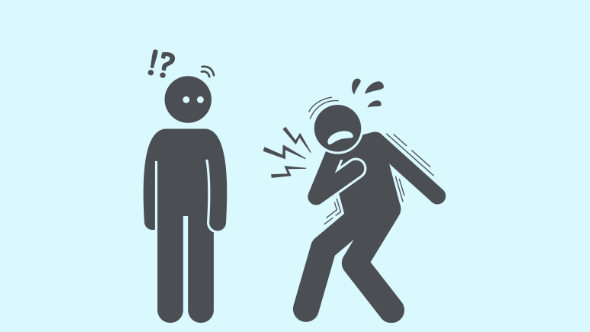
Natalie Fink
Responsibility fades in a crowd, but one person’s action can make all the difference.
The bystander effect is a psychological phenomenon where individuals are less likely to help a victim when others are present. In today’s society, this effect seems more pervasive than ever, fueled by our busy lives. It proves that when people fail to help, it’s not because they don’t care but because they assume someone else will step in.
The concept of the bystander effect emerged from the tragic 1964 murder of Kitty Genovese, a young woman who was attacked in New York while her neighbors, who heard her screams, did nothing. The presence of more witnesses paradoxically reduces the likelihood of intervention. This is not a relic of the past, it’s still alive in modern-day scenarios.
A study by Healthline revealed that when people are alone,” 75% of them will act if they witness someone in distress. However, when put into groups of six, that number drops to just 31%”. This stark difference highlights the unfortunate truth that the more people in the vicinity, the less likely any of them are to intervene. The bystander effect is a silent killer of compassion, eroding the sense of moral responsibility.
Social influence also plays a role in this trend. When people observe others doing nothing, they are more likely to follow, reinforcing the idea that inaction is acceptable. This creates a snowball effect, with one person’s reluctance breeding the next person’s hesitation.
According to Very Well Mind, experiments by Latane and Rodin during the late 1960s found that “70% helped a woman in distress when they were the only witness, however, only 40% helped her when others were around.” This difference reveals how the presence of others can diminish a person’s sense of urgency to help. Individuals feel fully responsible when alone, but in a group, people assume someone else will take care of it.
The bystander effect thrives on anonymity. In large groups, people often feel detached from the situation, as though their actions won’t make a difference in the grand scheme of things. A shift in mindset could spark a transformation in how we respond to the suffering of others. It is important to see the power in small actions and the importance of standing up for others.
The implications of the bystander effect go beyond isolated incidents; they are seen in everyday life. We see it in the classroom when a student is bullied, and no one steps in to help. We see it in the workplace when someone is unfairly treated, and colleagues stay silent. It’s in the grocery story when an elderly person struggles to reach the top shelf, and no one offers to help. These moments may seem small, but they accumulate, gradually wearing away at the social contract that binds communities together. The bystander effect robs us of our sense of community.
This effect reveals something far darker about humans: the fear of taking responsibility and the paralysis of uncertainty. It forces us to confront the uncomfortable truth that many of us would rather turn a blind eye than get involved. The challenge becomes not condemning these behaviors but rather understanding them and actively working to dismantle them.
Staying silent can have lasting consequences, turning preventable harm into irreversible tragedy. A single voice or action has the power to break the cycle. Overcoming the bystander effect begins with recognizing that responsibility lies not in the hands of many but in the choice of one.